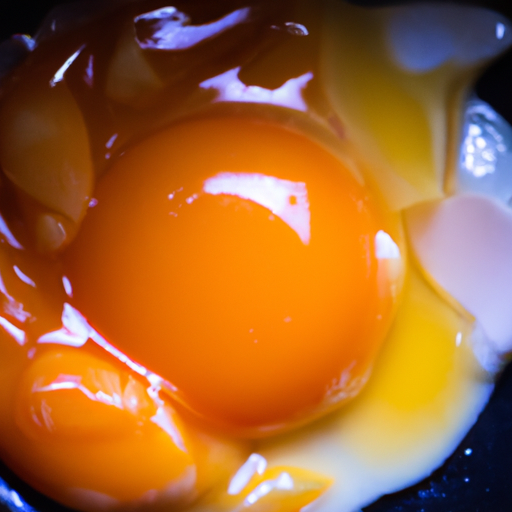Have you ever wondered how the feed given to chickens can affect the taste and color of the eggs they produce? It turns out that the type of feed chickens consume can have a significant impact on the flavor and appearance of their eggs. From the vibrant orange yolks of pasture-raised eggs to the pale yellow hue of commercially produced ones, the feed chickens consume can result in a wide range of variations. In this article, we will explore the fascinating relationship between feed types and their influence on the taste and color of eggs. So, if you’re curious about how feed affects the eggs you enjoy, read on to discover more!
Impact of Feed Types on Egg Taste
Effect of Grain-Based Feed
When hens are fed with a grain-based diet, it has various effects on the taste of their eggs. Grain-based feed provides hens with high-quality protein and fatty acids, which are essential for their overall health and egg production. These nutrients contribute to the rich and flavorful taste of the eggs. Additionally, the grain-based feed enhances the flavor profile of the eggs, giving them a distinct and enjoyable taste. It is important to note that the specific grains used in the feed can also influence the aroma of the eggs, adding a subtle yet pleasant scent.
Effect of Vegetable-Based Feed
If hens are fed with a vegetable-based feed, the taste of their eggs can be altered. This type of feed has the potential to modify the omega-3 fatty acid profile of the eggs. Omega-3 fatty acids are known for their numerous health benefits, and their presence in eggs can enhance the nutritional value. The vegetable-based feed can also impact the color of the yolk, making it richer and more vibrant. However, the exact effect on the taste of the eggs can vary depending on the specific vegetables included in the feed and their flavor profiles.
Effect of Insect-Based Feed
In recent years, feeding hens with insect-based feed has gained popularity due to its positive effects on egg taste. Insects are a valuable source of nutrients and proteins, and when included in the hens’ diet, they can significantly enhance the omega-3 content of the eggs. This results in eggs with a more distinct and desirable taste. Additionally, the use of insect-based feed can potentially improve the nutrient profile of the eggs, making them even more nutritious. It is also believed that the inclusion of insects in the diet may contribute to a subtle flavor enhancement and influence the consistency of the eggs.
Effect of Fish-Based Feed
Feeding hens with a fish-based diet can impact the taste of their eggs in several ways. Fish-based feed increases the levels of omega-3 fatty acids in the eggs, which not only enhances their nutritional value but also adds a unique and pleasant flavor. Moreover, the yolk color of the eggs can be modified by the presence of certain fish-based feed ingredients, resulting in a deeper and more vibrant hue. The combination of increased omega-3 levels and altered yolk color contributes to a distinctive taste that is favored by many egg enthusiasts.
Effect of Meat-Based Feed
The type of feed hens consume can even have an impact on the aroma and taste of their eggs. When hens are fed with a meat-based diet, the nutrient composition of the eggs can be altered. The presence of meat-based feed ingredients may lead to a subtle change in the aroma of the eggs, offering a unique fragrance complemented by their taste. Additionally, the yolk color can be influenced by the meat-based feed, resulting in a slightly different appearance. It is important to note that the specific meat ingredients used in the feed can vary, and each may have a distinct effect on the flavor of the eggs.
Impact of Feed Types on Egg Color
Natural Factors Affecting Egg Color
Apart from the feed types, natural factors also play a significant role in determining the color of the eggs. The breed of the hen, her age, and the environmental conditions in which she is raised can all influence egg color. Each breed has its own genetic traits, which can result in eggs of varying colors ranging from white to brown or even shades of blue and green. The age of the hen can also affect egg color, with older hens typically producing lighter-colored eggs. Furthermore, environmental factors such as light exposure and temperature can contribute to variations in egg color.
Effect of Feed Pigments on Egg Color
The pigments present in the feed hens consume can have a significant impact on the color of their eggs. Feed pigments fall into various categories, including xanthophylls, carotenoids, and flavonoids. Xanthophylls, such as lutein and zeaxanthin, are commonly found in feed ingredients such as marigold flowers and corn. These pigments contribute to the yellow or orange coloration of the egg yolk. Carotenoids, like canthaxanthin, are often derived from sources like paprika and alfalfa, and they can result in deeper orange or red tones in the yolk. Flavonoids, found in ingredients like blueberries and purple corn, can create subtle blue and purple undertones in the eggshell. Additionally, some synthetic pigments might be used in feed to achieve specific egg colors.
In conclusion, the feed type plays a crucial role in determining the taste and color of the eggs produced by hens. Whether it is grain-based, vegetable-based, insect-based, fish-based, or meat-based feed, each has its own unique impact on the sensory characteristics of the eggs. Furthermore, the inclusion of specific feed pigments can influence the coloration, adding to the visual appeal of the eggs. Whether you prefer a particular taste or aim for vibrant egg colors, understanding the impact of feed types is essential for producing eggs that meet your personal preferences and dietary needs. So, next time you savor a delicious egg, remember that the feed choices of the hen played a significant role in creating that delightful and visually appealing culinary experience.




